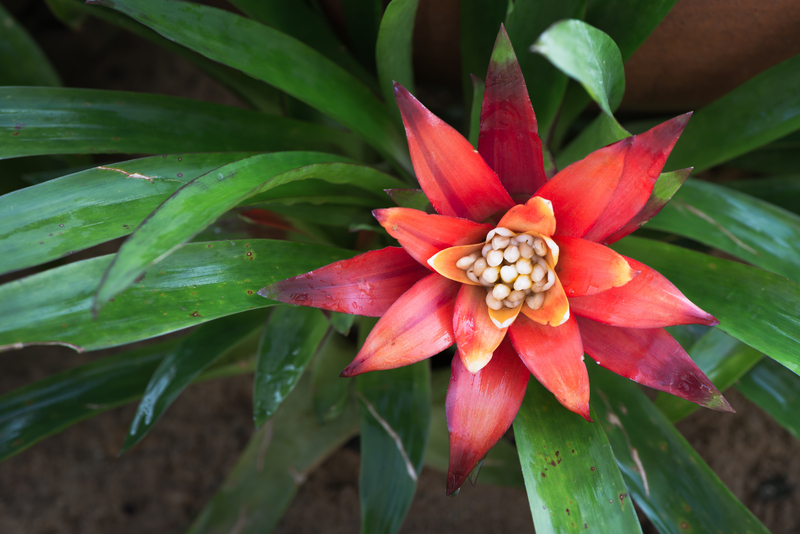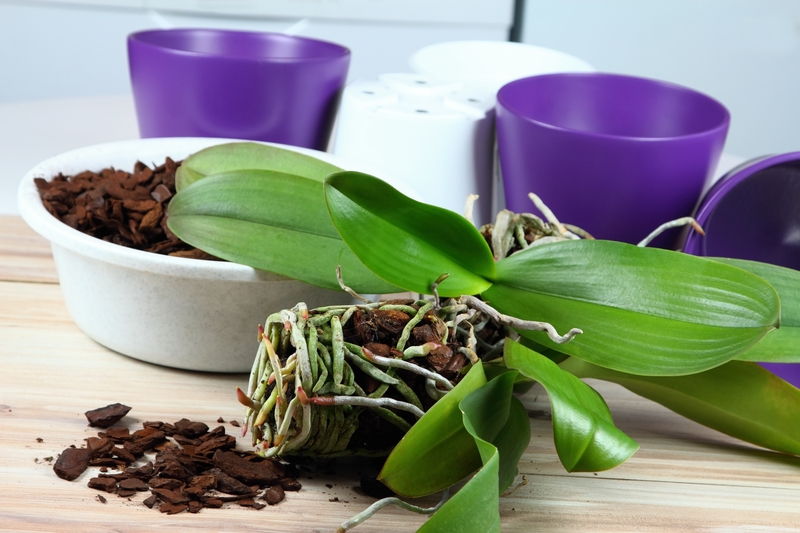The Art of Hedge Shaping: Design and Technique Excellence
Posted on 31/05/2025
The Art of Hedge Shaping: Design and Technique Excellence
The art of hedge shaping stands as a testament to human creativity in landscape design, blending horticultural expertise with artistic vision. More than a practical gardening task, hedge shaping transforms simple borders into living sculptures, enhancing the esthetics of gardens and properties around the world. Whether imitating geometric forms or fantastical topiary animals, hedge design demands patience, precision, and a passion for green spaces.
Understanding the Craft of Shaped Hedges
Hedge shaping refers to the deliberate pruning and training of hedges, shrubs, or bushes into predetermined designs. This technique, also known as topiary, has historical roots in ancient Roman gardens and flourished in Renaissance Europe. Today, landscaping professionals and home gardeners alike practice hedge shaping to beautify outdoor space, create privacy screens, or make bold artistic statements.
- Functionality: Neatly trimmed hedges serve as windbreaks, sound barriers, and property dividers, promoting structure within a landscape.
- Artistry: With advanced techniques, hedges can mimic spirals, pyramids, arches, animals, and abstract forms, blending horticulture with creative expression.
- Environmental Value: Well-maintained hedges support biodiverse habitats, offering shelter to birds and beneficial insects.

Why Master Hedge Shaping?
Perfecting the art of hedge creating yields a range of benefits, from boosting property value to fostering a relaxing hobby. Experts in the field have long noted the therapeutic and meditative benefits of shaping and maintaining green living forms.
- Enhanced Curb Appeal: Shaped hedges provide an immediate visual upgrade, establishing elegance and structure.
- Personal Satisfaction: The gradual transformation from unruly shrub to sculpted masterpiece brings a special sense of pride.
- Year-Round Interest: Even in winter, evergreen hedges retain their distinct forms, providing visual focus during dormant months.
Essential Elements of Hedge Design
Before picking up the shears, consider critical design aspects ensuring your hedges not only look spectacular but also thrive for years to come:
1. *Selection of Plant Species*
The success of hedge shaping largely depends on the right choice of plant materials. Popular species for hedge design include:
- Boxwood (Buxus): Slow-growing, dense foliage, ideal for intricate topiary work and formal borders.
- Yew (Taxus): Robust, dark-green needles, tolerant of extensive pruning and shade.
- Privet (Ligustrum): Fast-growing and affordable, good for tall hedges and privacy screens.
- Holly (Ilex): Foliage density with added winter interest from berries.
- Laurel and Euonymus: Excellent for broad-leaved, lush green hedges.
2. *Purpose and Placement*
Ask yourself: *Will the hedge act as a property boundary, a windbreak, or a decorative centerpiece?* The answer will inform the desired height, width, and final form.
3. *Hedge Style and Shape*
Hedge shapes range from traditional straight-edged lines to freeform curves or creative topiary silhouettes. Classic geometric styles--spheres, rectangles, cones--offer timeless appeal, while inventive or whimsical styles showcase modern garden artistry.
Principles of Hedge Shaping Design
Symmetry and Balance
One of the most important rules is maintaining visual harmony. Aim for symmetry on both sides, particularly with formal hedges or patterns that repeat.
Scale and Proportion
The proportion of hedge shapes to surrounding features--paths, lawns, and buildings--plays a crucial role. Oversized hedges can overwhelm small gardens, while undersized shapes may look insignificant beside large landscapes.
Repetition and Rhythm
Repeating hedge forms along walkways or borders creates a rhythmic, unified look that guides the eye through the garden.
Textural Contrast
Combining finely-textured hedges with coarser plants or hardscaping elements can result in a dynamic and engaging garden scene.
Techniques for Creating Stunning Hedge Shapes
Mastering the technique excellence of hedge shaping involves understanding the growth habits of your chosen plants, precise timing, and meticulous attention to detail. Here are proven tips and techniques:
1. *Planning and Preparation*
- Visualize the Shape: Before cutting, outline the intended form mentally or by using string lines, stakes, and markers for straight edges.
- Assess Plant Health: Ensure hedges are well-established, disease-free, and adequately watered before heavy pruning.
- Sharp Tools: Clean, sharp shears or powered hedge trimmers ensure smooth, healthy cuts.
2. *Step-By-Step Hedge Shaping Technique*
-
Start From the Bottom Up
Begin trimming from the base, ensuring gradually narrowing sides toward the top. This classic "A-shape" profile allows sunlight to reach all parts of the hedge. -
Maintain a Level Top
Use a spirit level, string, or guide rail to keep horizontal tops even, particularly for formal hedges. -
Follow Natural Growth Patterns
Avoid cutting into bare wood--most hedge species won't regrow from old branches. Take small, frequent cuts rather than drastic removals. -
Refine Details Gradually
For topiary work, sculpt rough outlines first, then progressively refine curves and angles with hand shears.
3. *Specialized Topiary and Freeform Shapes*
- Use Frames: Metal or wire frames can be placed over shrubs to guide complex shapes, useful for animals or abstract designs.
- Template Guides: Cardboard or wooden cut-outs act as templates for repeated geometric shapes along a hedge row.
- Patience is Key: Large or intricate topiaries often require several growing seasons to reach their intended form.
Seasonal Timing and Maintenance for Excellence
Best Time to Shape Hedges
- Evergreens: Late spring to early summer, after new growth has "hardened off," minimizing cold damage risk.
- Deciduous Hedges: Late winter or very early spring, before sap rises and new buds swell.
Light trimming throughout the growing season encourages fullness and maintains crisp lines, but avoid heavy pruning during late autumn or during frost risk.
Ongoing Care and Perfection
- Watering: Young or newly-shaped hedges need consistent moisture, especially during dry spells.
- Feeding: Use balanced, slow-release fertilizers to promote healthy, dense growth--a must for topiary rigor.
- Weed and Pest Control: Keep the base of hedges free from invasive weeds and monitor for pests, such as aphids and scale insects.
Advanced Tools and Equipment for the Artisan Gardener
While traditional hedge scissors suffice for small jobs, professional-quality tools ensure precision and minimize fatigue for larger or more intricate projects.
Recommended Hedge Shaping Tools
- Hedge Shears or Clippers: For manual, detailed work and finishing touches.
- Powered Hedge Trimmers: Ideal for large, straight runs--electric or gas models available.
- Long-Reach Pruners: For tall or wide hedges otherwise out of reach.
- Topiary Frames and Templates: Essential for shaping complex, repeatable designs.
- Spirit Levels, Rulers, and Plumb Lines: To maintain accuracy in symmetrical or formal style hedges.
Common Challenges and How to Overcome Them
Even experienced gardeners can encounter obstacles while striving for hedge design excellence. Here are typical problems and actionable solutions:
- Uneven Hedges: Frequently stepping back during trimming, using string or stakes as guides, and trimming in good lighting can help maintain uniformity.
- Brown Patches: Avoid cutting into old wood; if damage occurs, prune lightly to encourage new growth around the affected area.
- Hedge Gaps: Tie in wayward growth during the growing season or replant empty spaces for future fullness.
- Pest/Environmental Stress: Regular inspection, proper mulching, and prompt intervention with organic solutions are essential for hedge health.
The Artistic Side: Topiary as Living Sculpture
The true art of hedge shaping goes beyond straight lines or box shapes--it becomes a form of living sculpture. Globally renowned gardens showcase whimsical topiaries, intricate mazes, and dramatic parterres crafted from evergreen hedges.
Famous Hedge Artistry Examples
- Levens Hall (UK): Home to spectacular 17th-century topiary, including birds, geometric shapes, and abstract designs.
- Chateau de Villandry (France): Showcases grand ornamental parterres bordered by meticulously shaped box hedges.
- Biltmore Estate (USA): Features sculpted yew hedges framing the estate's formal gardens.
- Private Residential Gardens: Increasingly, homeowners experiment with custom designs suiting modern tastes and personalities.
Unleashing Your Creativity
Whether your vision is a classic green wall or a playful elephant, the only real limit is patience--and perhaps your plant's natural aptitude! Design small at first, then build up to more ambitious hedge shaping projects as skills improve.
Expert Tips for Achieving Hedge Shaping Excellence
- Regular Light Pruning: A little and often prevents overgrowth and keeps edges sharp.
- Correct Angles: Always trim so the base is wider than the top; this prevents lower branches from becoming bare.
- Visual Reference: Use photos of established topiaries or garden plans as inspiration for your own designs.
- Seasonal Evaluation: In spring, assess the previous year's shape and growth to plan changes or improvements for the season ahead.
- Healthy Soil: Invest in regular soil testing and amendments to support strong hedge growth and vibrant color.

Eco-Friendly Practices and Biodiversity
Excellent hedge craftsmanship not only creates beauty, but also nurtures the environment. Here's how responsible gardeners can merge art with ecology:
- Choose Native Species: Favoring indigenous shrubs benefits local wildlife and ensures easier maintenance.
- Layered Planting: Mix hedge plants with flowering shrubs to provide continuous food and shelter for pollinators.
- Organic Mulching: Retains moisture, suppresses weeds, and improves soil quality naturally.
- Skip Chemical Pesticides: Favor natural pest management solutions--beneficial insects, manual removal, or biological controls.
Conclusion: Shaping Your Living Masterpieces
The art of hedge shaping invites you to turn outdoor spaces into captivating garden galleries--blending horticultural skill, vision, and care. From initial design and species selection to advanced topiary artistry, hedge shaping offers limitless creative and practical rewards. With patience, the commitment to technique excellence, and a love for green spaces, anyone can elevate their landscape from ordinary to spectacular, one trim at a time.
Ready to start your own hedge shaping journey? Gather your tools, plan your design, and experience the transformation. The beauty of living garden art awaits!

